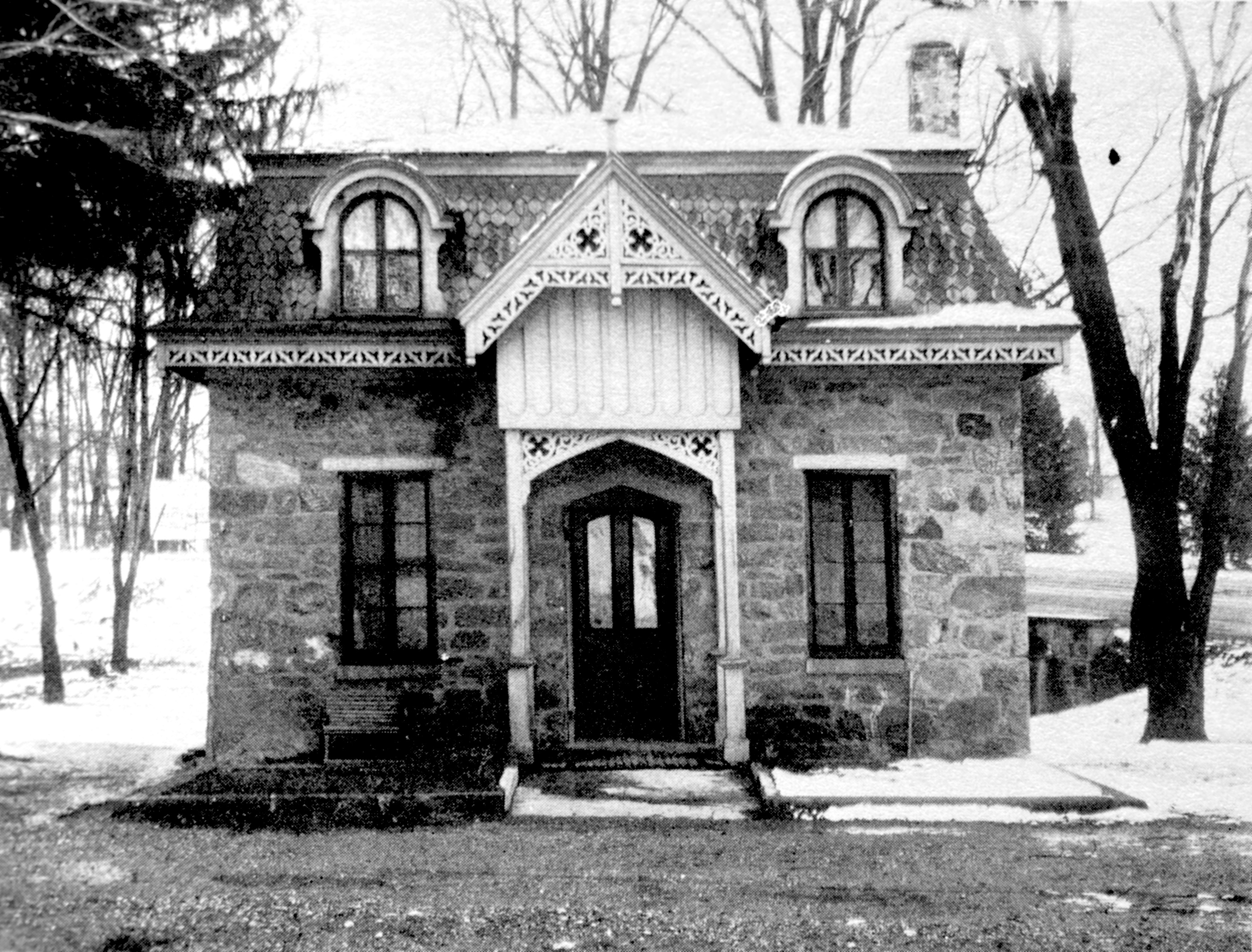BLEAK HOUSE PORTER'S LODGE
This delightful service building at the main entrance to the one-half-mile-long driveway leading off George Avenue (then 7th Street Road) to Bleak House, the wooden Italianate, mansarded country home of Gov. Alexander R. Shepherd, combines several styles into a rustic fantasy. The estate was named after the novel by Charles Dickens, which Shepherd was reading at the time construction began. The entrance porch and door itself reflect the Gothic Cottage taste of the pre-Civil War period, while the slender chamfered piers, which supported the lacy gable, hint at the stick style then coming into vogue. The rough ashlar walls meld well with the lodge's rustic setting. The mansard and hood-molded dormers, however, were the only features that unified the lodge with the design of the main house.
Even though Shepherd moved to Mexico and made a second fortune (See Shepherd's Row no. 83) in mining silver, the family retained possession Of the 200-acre Bleak House estate. His wife and children were living there when shepherd died in Chihuahua in 1902. Two months after his death, Shepherd's body arrived from Mexico for burial in his native Washington in the family mausoleum in Rock Creek Cemetery. Mrs. Shepherd sold the estate, including the main house, located at the present northwest corner of Alaska Avenue and Geranium Street, in 1910 to the Lynchburg Investment Company. Bleak House and its dependencies were demolished in the following years when the land was subdivided for new houses. Part of the tract, as well, became the grounds of Walter Reed Amy Hospital. No trace remains of this once well-known landmark.
